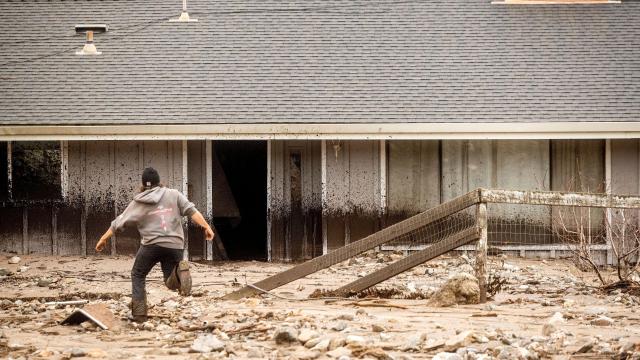British Columbia experienced devastating landslides and flooding last fall after torrential rain fell on regions scarred by wildfires, and more of these events are likely coming soon. A study published Friday in Science Advances found that under a high-emissions scenario — in a world where we do nothing to stop current levels of emissions — the frequency of back-to-back wildfires and rainfall events would increase seven times by 2100 in the Pacific Northwest and become twice as likely in California. The combo of fire and rain sets the stage for landslides, which can sweep away homes in an instant.
“We know those things are happening anyway, so let’s think about how likely it is within a single year both of them would happen — a fire, and then a rainstorm afterwards,” Samantha Stevenson, an assistant professor of environmental science at University of California, Santa Barbara and a coauthor of the study, told Earther. “We care about that because that has a much bigger impact than either of those things just happening individually.”
Both wildfires and heavy rainfall can be devastating on their own, but when rain falls on areas that haven’t fully recovered from fire, the effects can be catastrophic. Wildfires burn off a crucial layer of vegetation that helps to capture some of the water during rainfall, slowing down the water on its way into the soil. When heavy rains fall on areas scarred by wildfires, that barrier doesn’t exist, making debris flows (the more scientifically appropriate name for “mudslides,” since a lot of stuff besides mud can get caught up in the currents) much more likely. Fires also change the chemical composition of the soil itself, causing runoff to increase and upping the likelihood of severe erosion in certain areas.
The study, which uses climate modelling to run different scenarios, examines the chance that wildfires and rainfall will coexist in a certain time period. “If you have two sets of dice, and one is for fire weather, and one is for rain, you could roll those independently, and some of the time you’d come up with, say, a six, and you’d get extreme fire or extreme rainfall,” Stevenson said. “That would happen by chance anyway. But what climate change is doing is loading those dice, so you’re more likely to get those extreme values.”
The findings aren’t particularly surprising; the IPCC report published last year clearly laid the links between climate change supercharging rainstorms as well as helping wildfires get bigger and more destructive. But they’re extremely worrisome, given how devastating extreme rainfall can be to areas that have recently burned. Folks in the Pacific Northwest got a taste of what this future could look like last fall, when an atmospheric river dumped a torrent of rain on parts of British Columbia that had suffered through wildfires that summer. Thousands of people were ordered to evacuate from towns and cities in the region, while at one point every major highway out of Vancouver was closed. Officials had to rescue nearly 300 people, including dozens of children, off a highway after they became trapped overnight by water, rocks, and mud.
Importantly, the study’s findings operate under a “business as usual” emissions scenario — projections that do not take into account any sort of climate action whatsoever and which are (hopefully) an overshoot of what actually will happen at the end of the century as the world tries to take decisive climate action now. However, even if the doomsday numbers the report projects are an overshoot, climate change has already upped the risk of wildfires and rainfall occurring in tandem.
“The increase in risk is already here,” Stevenson said. “It will get worse than it is now — the question is just by how much.”
